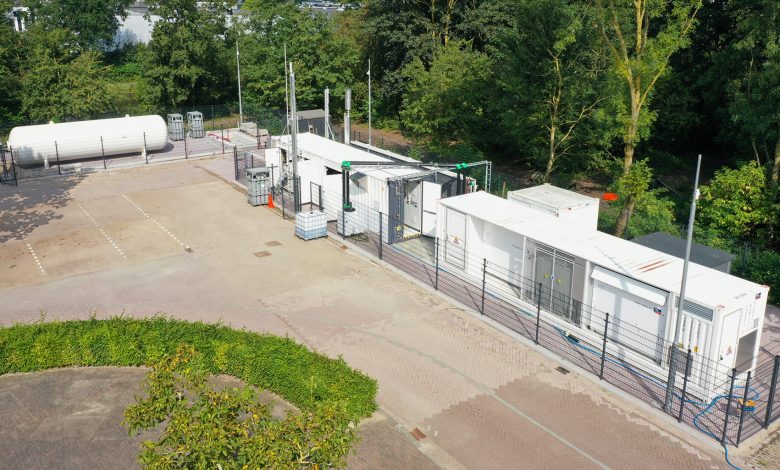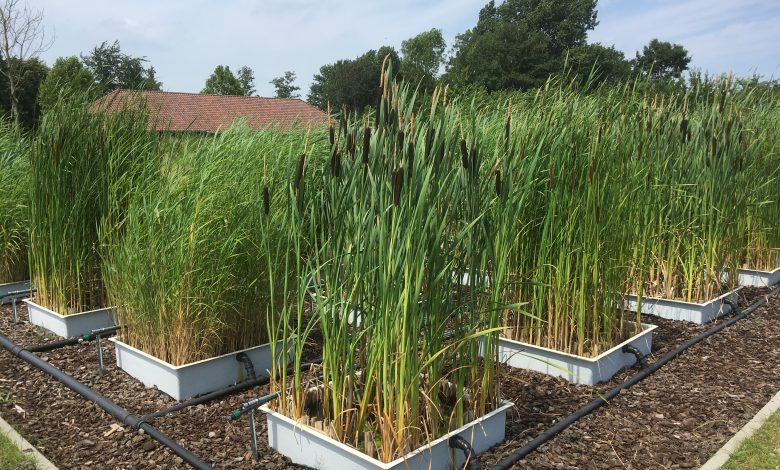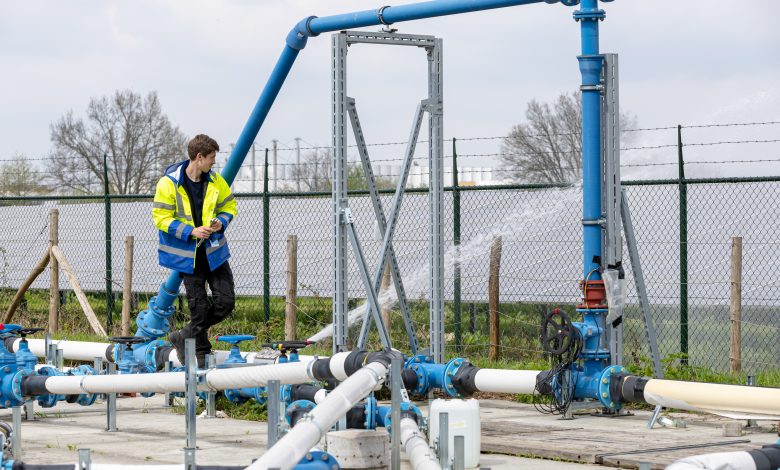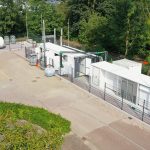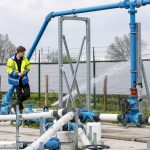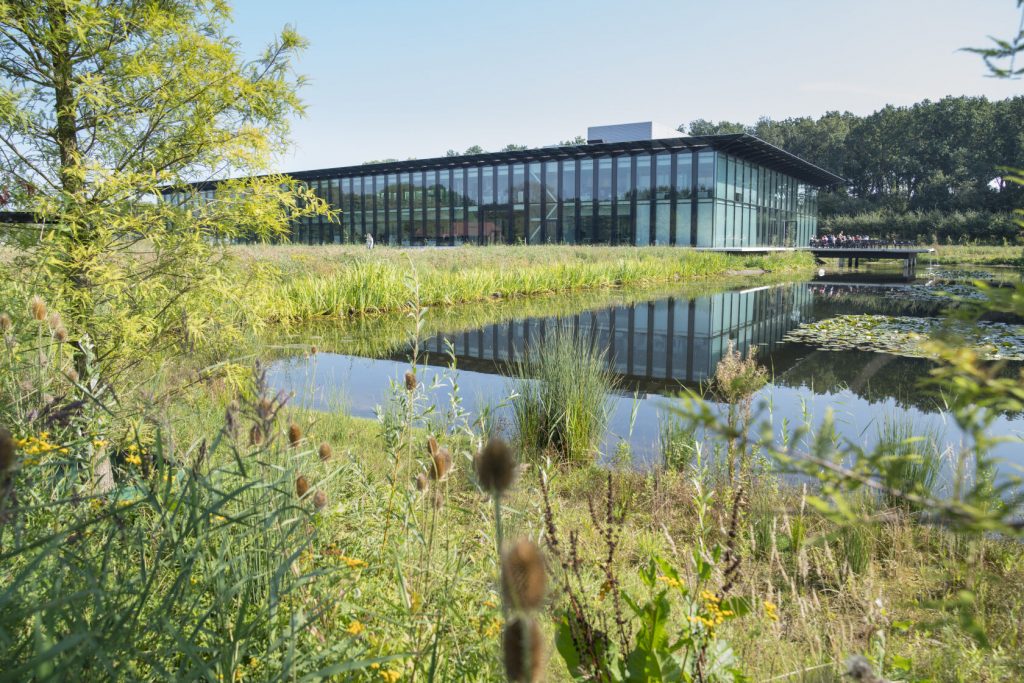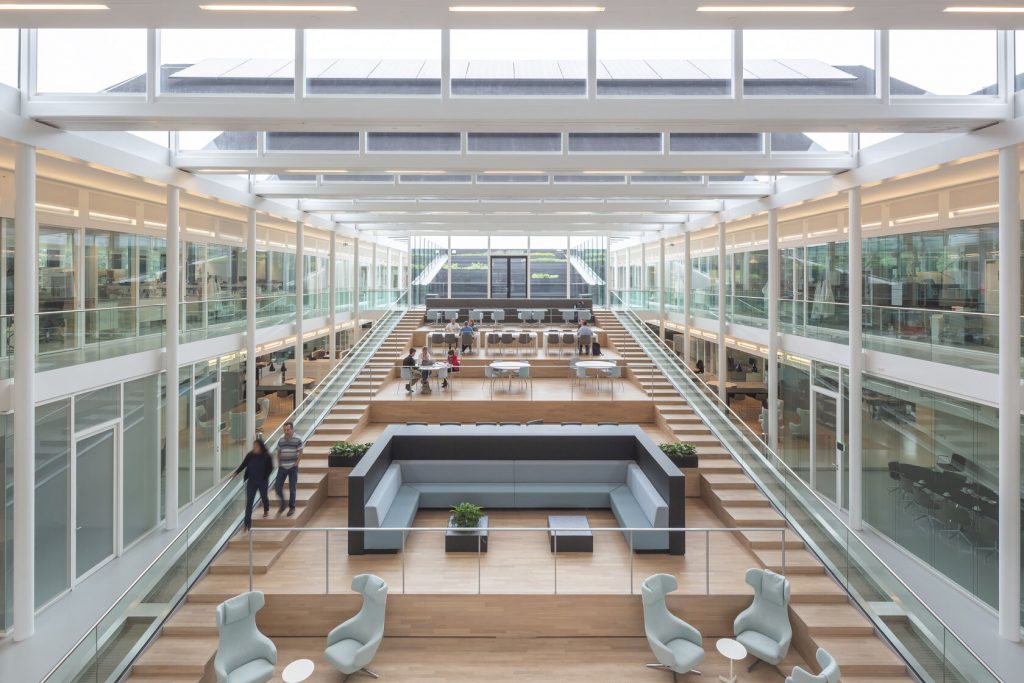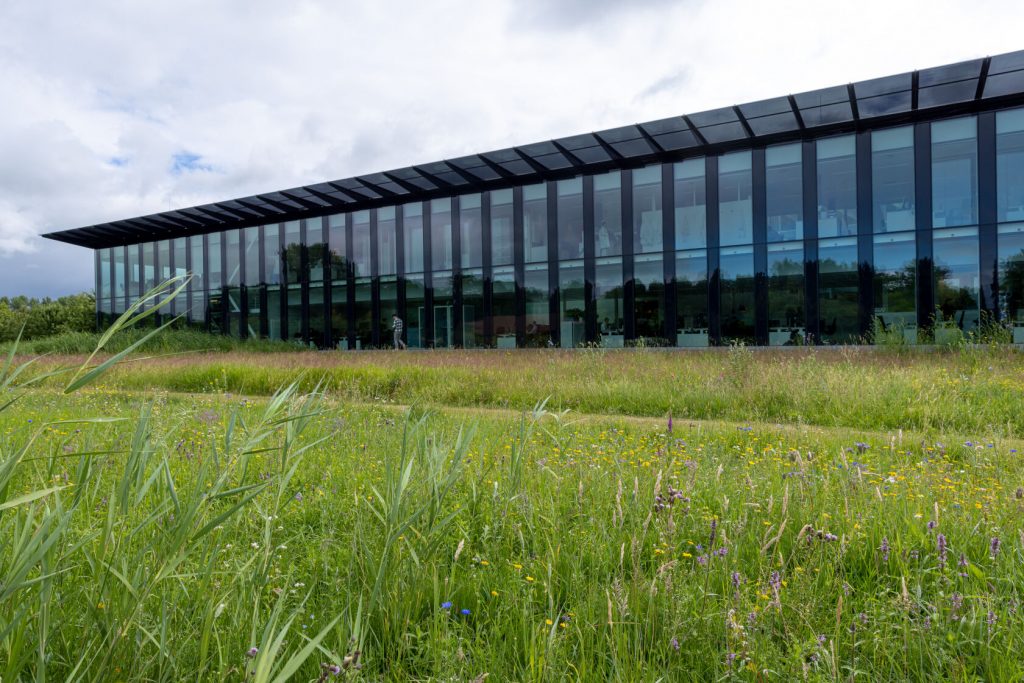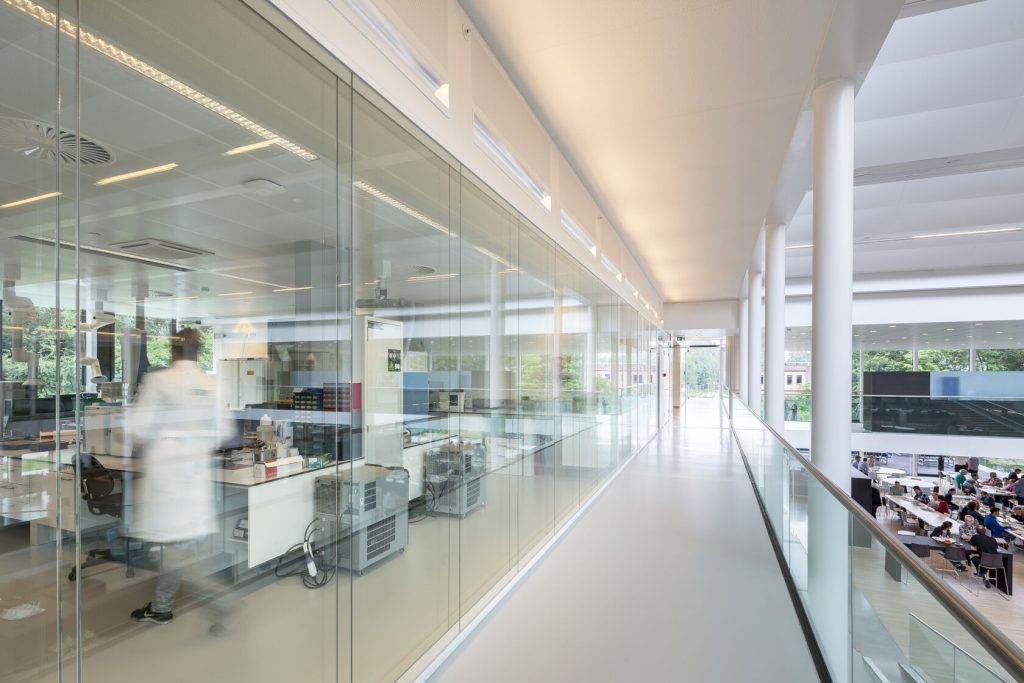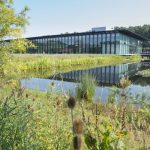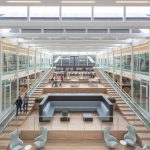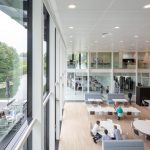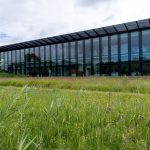Waterkwartier is the meeting place for innovative water professionals from around the world. Located in the heart of the Netherlands, at the Groningenhaven in Nieuwegein, this sustainable complex is the home base of KWR and its partners. In this green oasis, we conduct groundbreaking, applied research and work together to create a water-wise future..
KWR shares the building with other water partners: Allied Waters, Watershare, Hysolar, TKI Water Technology, Wateropleidingen, Aqua Minerals, RIWA-Rijn, and Kaumera.
The grounds
Waterkwartier is a green oasis featuring a striking, transparent, sustainable building. There is a strong focus on biodiversity, with abundant greenery, diverse vegetation, a pond, a trench, and a paludi-culture area. Additionally, it houses an electrolyser for green hydrogen production, various experimental setups, and even a water-related artwork.
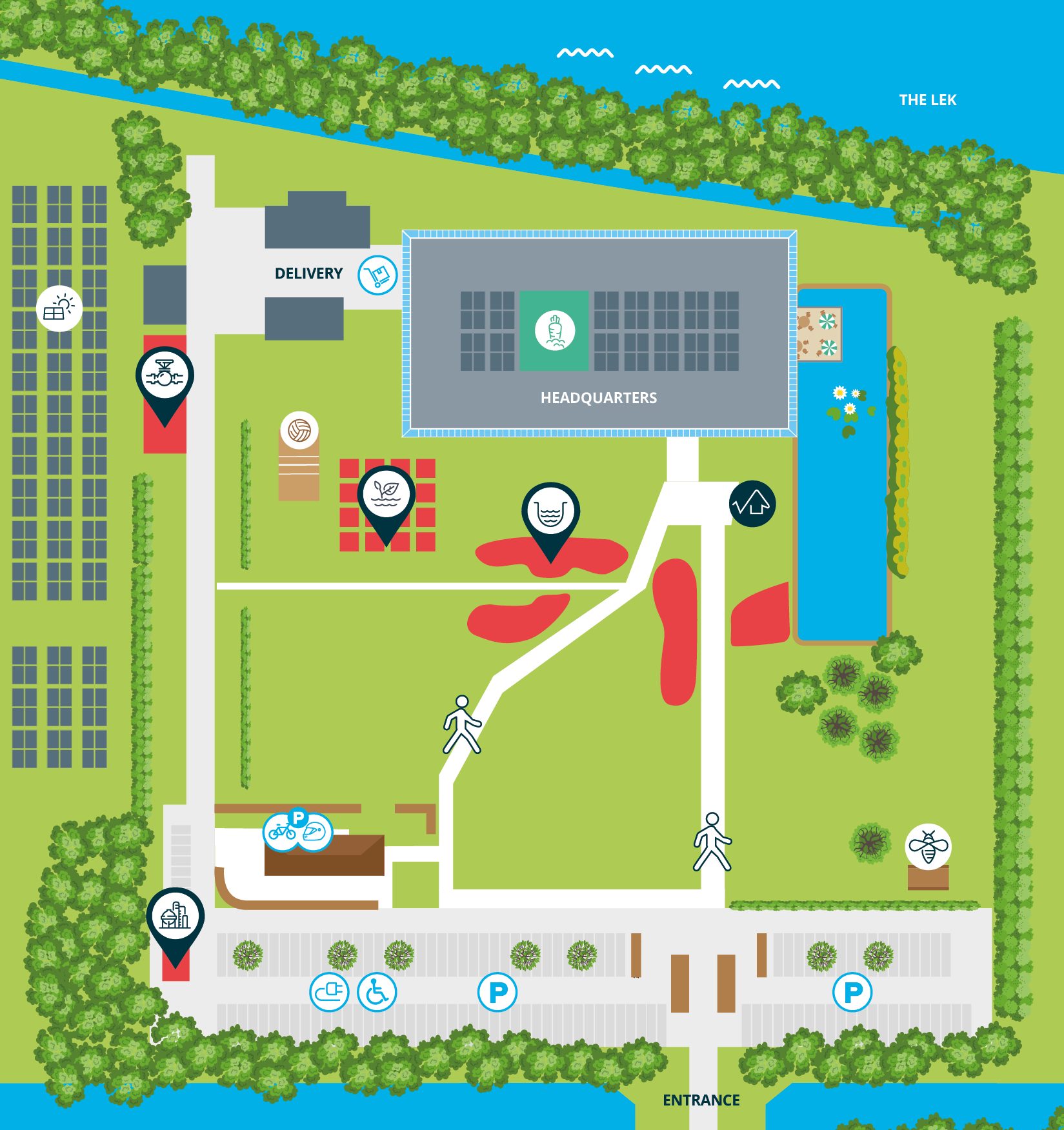
Green hydrogen
Waterkwartier houses a 2.5 MWe electrolyser part of Hysolar, which is used for the production of green hydrogen. The electrolyser is powered by green electricity and uses ultrapure water. The hydrogen is transported via an underground pipeline to the nearby Hysolar refuelling station.
Trench
A trench has been installed to improve water management. Its primary purpose is to drain excess water from the garden and roof into the pond. The biodiversity is further encouraged by applying special seed mixtures which are dedicated to the different moisture levels in the trench.
Garden
The Waterkwartier garden blooms from March to October, with a rich variety of herbs and natural banks for amphibians. Nesting boxes for tits help provide natural pest control, while hedgerows offer shelter for birds. Leaves are left on the ground to create healthy soil and hiding places for insects and hedgehogs. .
Paludiculture
Since 2023, Waterkwartier has been hosting a 4-year mesocosm experiment with 30 pond containers, where a new form of sustainable agriculture, known as ‘paludiculture’, is being tested as part of the Netherlands Peatland Innovation Programme (VIPNL). KWR is researching the water quality and quantity in wet cultivation.
TUBES
TUBES is KWR’s outdoor facility for testing new technologies and operation methodologies before rolling them out in real, functioning drinking water distribution systems. International collaborations used fibre-optic technologies here to detect leaks, temperature changes, and vibrations in pipes. TUBES allows for safe, hygienic testing without risking disruption in operational networks.
The building
The headquarters is a meeting place for collaboration, knowledge sharing and innovation. Free-standing in its green setting, with its glass façade and partitions, the prevailing atmosphere is one of transparency. The quality facilities lend themselves exceptionally well to all kinds of gatherings in our collaborative work with partners.
Sustainable building
The headquarters is designed with sustainability as a core principle. Smart technologies like solar panels and thermal energy storage have been implemented. In addition, the building is flexible, demountable, and made of easily reusable materials.
Restaurant
The choice of an entirely vegetarian restaurant helps save water and reduce environmental impact. Dishes are prepared with vegetables and herbs from the indoor garden, ensuring a sustainable, locally-focused food supply.
Biodiversity
Sustainability is a central feature of Waterkwartier, with a particular focus on biodiversity. The garden is designed to support a diverse ecosystem where insects, birds and small mammals thrive. Inside the building, the meeting rooms are named after Dutch landscapes, plants, and birds that stimulate biodiversity, such as:
- Heath
Heathlands have been part of the Dutch landscape for centuries, fostering unique biodiversity. They host specialized species like the heath butterfly and sand lizard. Without active management, fast-growing plants would overrun the heath, leading to a loss of these species and the ecosystem’s intricate balance. - Sundew
Sundews thrive in nutrient-poor, wet environments like bogs and marshes. By capturing insects for nourishment, they play a crucial role in maintaining the delicate balance of these ecosystems. Their presence supports diverse insect populations that are essential for wetland biodiversity. - Kingfisher
The kingfisher, with its vibrant blue feathers and swift, graceful dives, is a striking and unique presence in the Netherlands. Relying on clean, clear waters to hunt fish and insects, it serves as a vital indicator of healthy aquatic ecosystems.
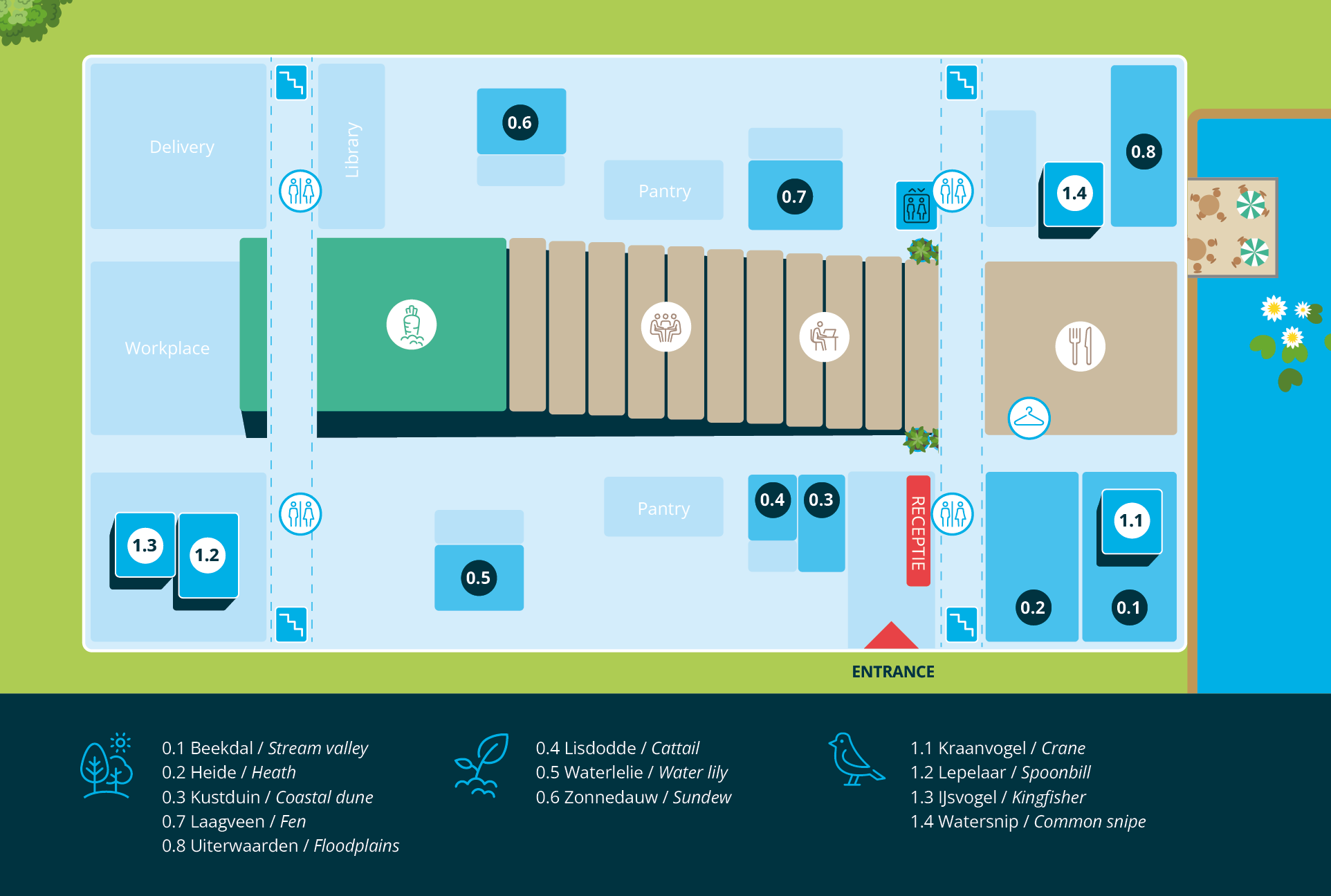
Floor plan of the main building, where the meeting rooms are named after landscapes, plants, and birds in the Netherlands that stimulate biodiversity.
View the full brochure on the Waterkwartier here.
Waterkwartier, community for inspiration & collaboration
